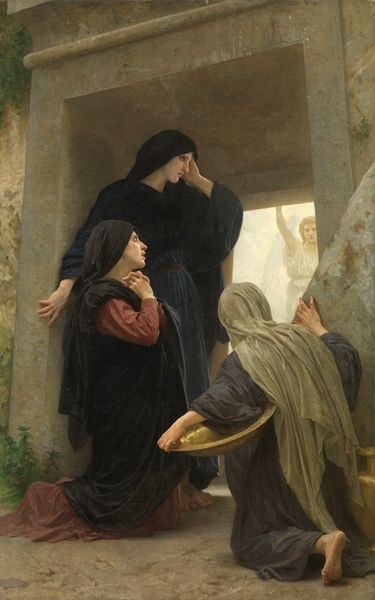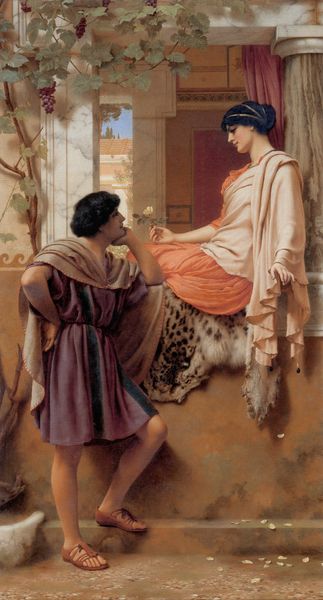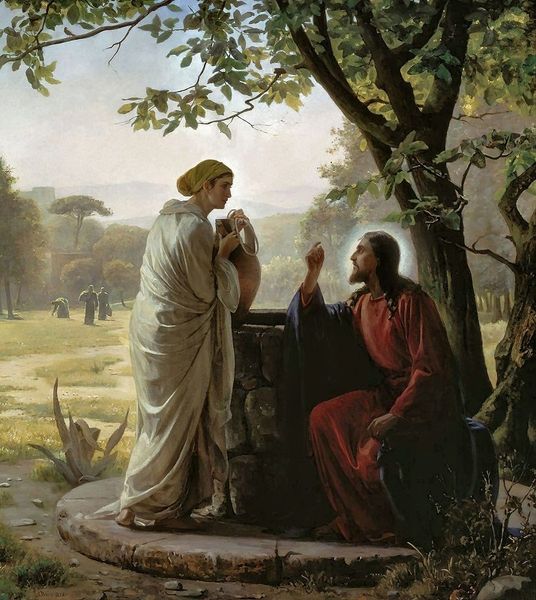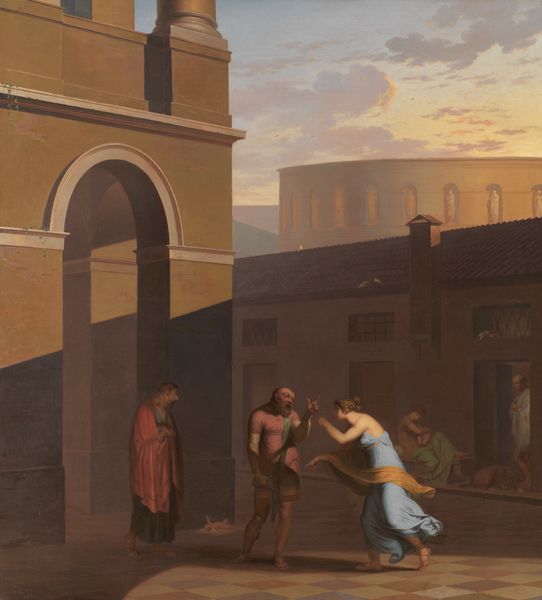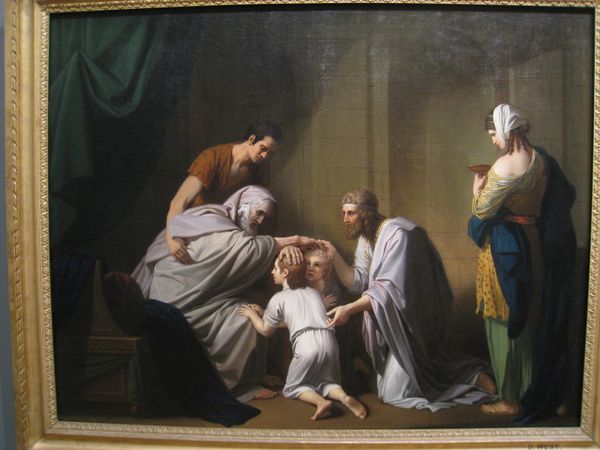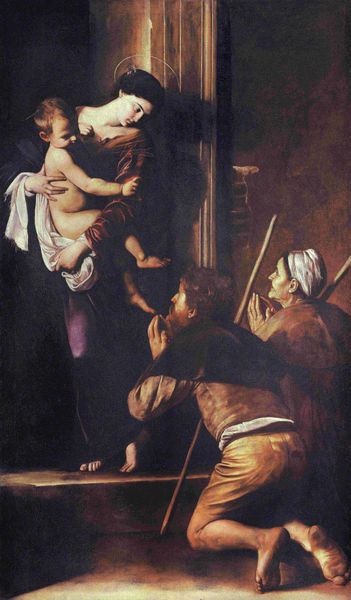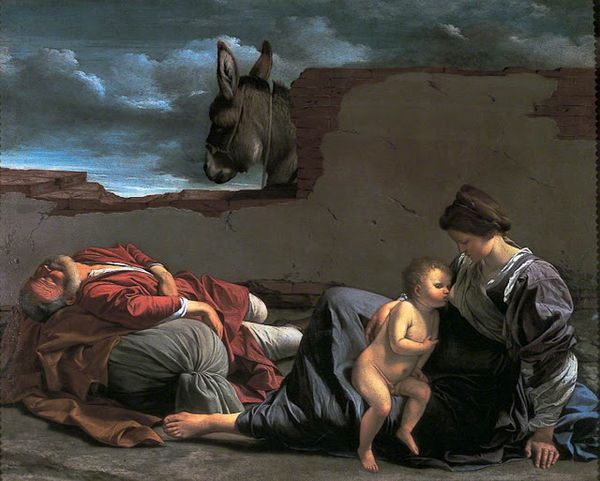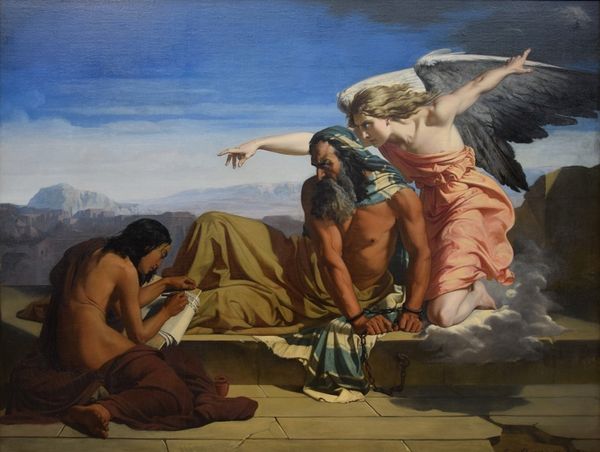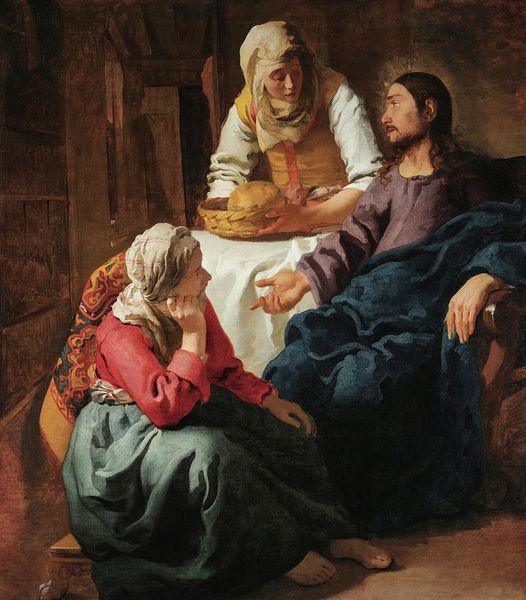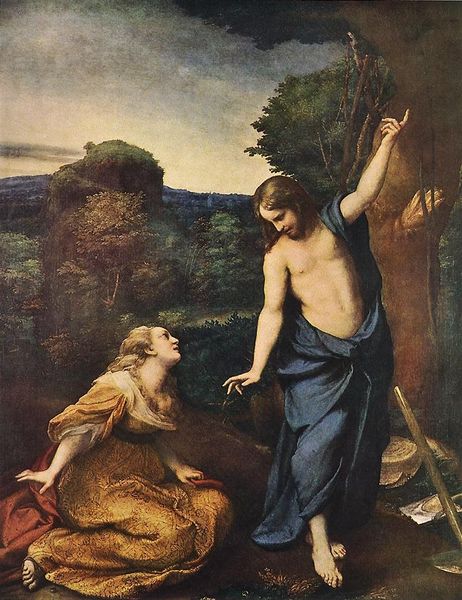
Copyright: Public domain
Curator: Looking at this painting, I'm immediately struck by its subdued, almost mournful tone. There's a palpable sense of leaving, of something ending. Editor: Indeed. What we are looking at is entitled "The Departure of Jacob". It’s an oil on canvas work painted by Rodolfo Amoedo in 1884, exemplary of the Romanticism period. The narrative pulls from the book of Genesis and is heavy with art historical precedent. Curator: Yes, the Biblical narrative is clear, but look at the figures. The formal construction uses diagonals leading our eye to the distant horizon and a new moon. Note the woman, likely Jacob’s mother Rebekah, with the tender placement of her hand guiding him, reinforcing a dynamic between protection and direction. What is also really affecting, at least for me, is that muted color palette – it almost seems to drain away any sense of triumph. Editor: Right, the application of Romanticism here seems to reinforce the idealization of emotion above all else. I think, culturally, that sentiment also served Amoedo as an allegory for broader social conditions in late 19th century Brazil. Jacob’s exile, forced by family conflict, mirrors the many conflicts of the time like abolitionism, race, land ownership, all against the decline of the monarchy. The departure could thus represent many types of separation. Curator: I hadn’t considered the sociopolitical context that overtly, but it tracks, the formal landscape painting certainly hints at themes much bigger than a domestic drama. I think too the contrast in textures creates a sense of Jacob leaving something of material comfort for the stark unknown beyond. Notice how Amoedo contrasts the rough garments of Jacob versus the smooth brushwork rendering his face. Editor: Exactly, Amoedo creates a visually accessible scene loaded with political relevance, but presented within a visual language familiar to the elites of the period and academic art world in general. The museum, the gallery, these became places to grapple with that very identity. Curator: That intersection of personal experience and socio-political realities, viewed through the lens of form and technique, truly enriches our interpretation of "The Departure of Jacob". Editor: It’s in understanding this convergence, from artistic elements to historical backdrops, that allows us a richer conversation with the artwork’s own journey across time.
Comments
No comments
Be the first to comment and join the conversation on the ultimate creative platform.
